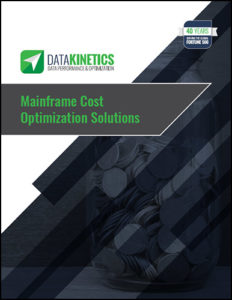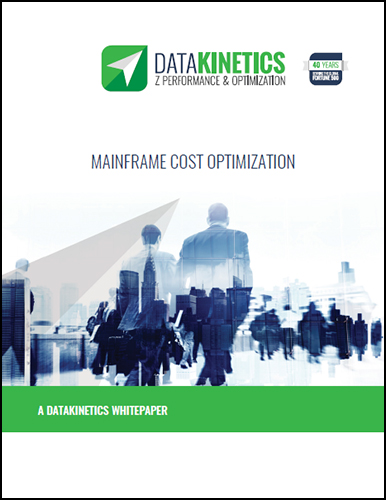Processing More Doesn’t Have to Cost More
You don’t have to go nuts to control IT costs—you can make effective optimizations to the infrastructure that you’ve already invested in.
Mainframe Cost Optimization
The mainframe is the best platform for running large-scale transaction processing because that is what it was designed for. It is also the most cost-effective platform for these large-scale operations. However, there is a problem—and it is in fact, cost.
It is not the cost of the platform. The dollar issue at hand is related to the constantly rising costs. And these rising costs are due to increased workloads from business growth—nobody is against increased business, but processing more business transactions just costs more.
Controlling costs becomes more difficult with higher demands
The typical way to deal with rising demands on the mainframe is to plan for regular system upgrades – for more MSU and CPU capacity. IT organizations run a two- to five-year cycle of system upgrades. This satisfies the need for more computing power to handle the rising demand on the systems, but it does nothing to help control costs.
Controlling costs these days includes a mix of complicated solutions and half-measures like scheduling, trying to use as much zIIP as possible, initiating sub-capacity pricing and performance capping scenarios, and various tuning techniques. Another popular “cost control” solution is migrating off the mainframe—a course of action fraught with tremendous risk. While effective to some degree, these solutions can only take you so far. Your costs are still going to increase; it’s just a matter of how much you’re willing to spend in time, energy, risk, and money.
Nobody is against increased business, but processing more business transactions just costs more.
Mainframe cost optimization solutions
High-Performance In-Memory Technology
High-performance mainframe in-memory technology can be used to make your existing applications more cost-effective—particularly those in environments experiencing ultra high transaction processing rates, like batch reconciliation or especially intense online transaction processing. This technology works by allowing select data to be accessed using a much shorter code path than most data. When only a small portion of data—the data accessed most often—is accessed this way it uses considerably fewer cycles. Lower system resource usage translates directly into lower operations costs.
IT Business Intelligence to Control Costs
IT organizations collect tremendous amounts of data about their own computing resources every day – both mainframe, midrange servers locally, or in third-party datacenters. So much data is collected, that you could call it their own “IT Big Data.” And with the right toolsets, this IT data can be used to reduce the cost of datacenter operations.
IT business intelligence solutions provide valuable information to decision makers at all levels—this includes SMF and other data from your mainframe systems, MXG, Win32 and WMI, SSH data from your server farms, along with corporate business and IT costing information. All this information, presented graphically, can show the various workloads over time, with associated cost shown as well.
Want to Learn More?

Optimizing mainframe costs
DataKinetics Z Mainframe cost optimization solutions provide a way to reverse the trend of large-scale IT cost increases, and to help the overall financial picture for those organizations running mainframe systems. The solutions mitigate one of the major perceived risks of staying on the mainframe: the ongoing operational cost. By leveraging existing IT investments, IT organizations can achieve a sharp decrease in cost-per-transaction and even ongoing operations costs. At the same time there will be corresponding throughput capacity and overall system performance improvements.

Learn more about the technologies that support mainframe cost optimization.
tableBASE
tableBASE can lower your costs and mainframe TCO, dramatically reduce batch processing time and optimize your MIPS usage, offering performance benefits and more powerful and efficient applications.
Learn More
IT Business Intelligence
IT Business Intelligence collects capacity and performance data from the IT infrastructure and combines these with business information such as costs, which application and organizational unit is using the resources, and for what activities.
